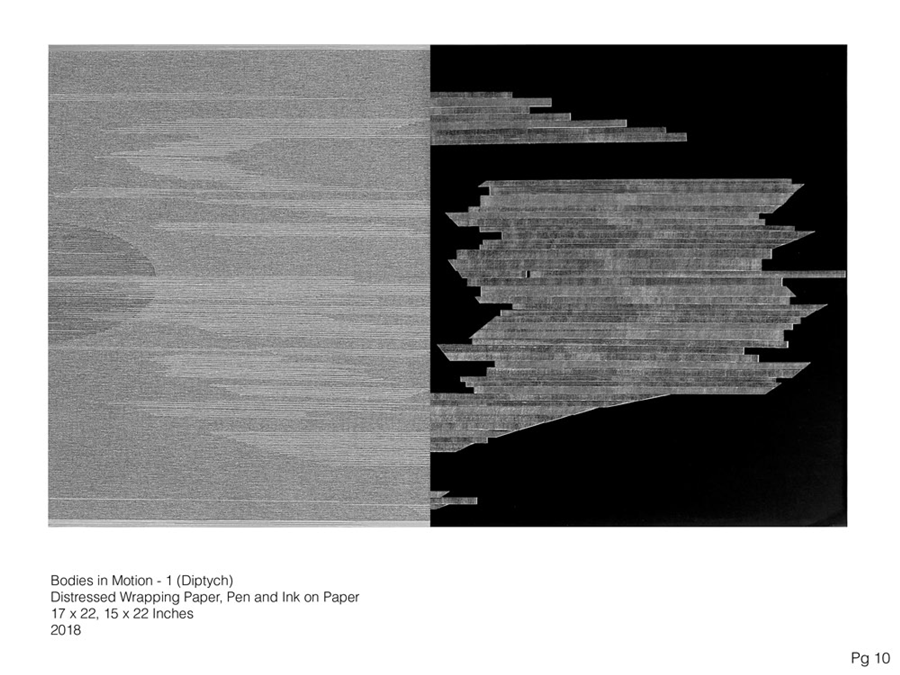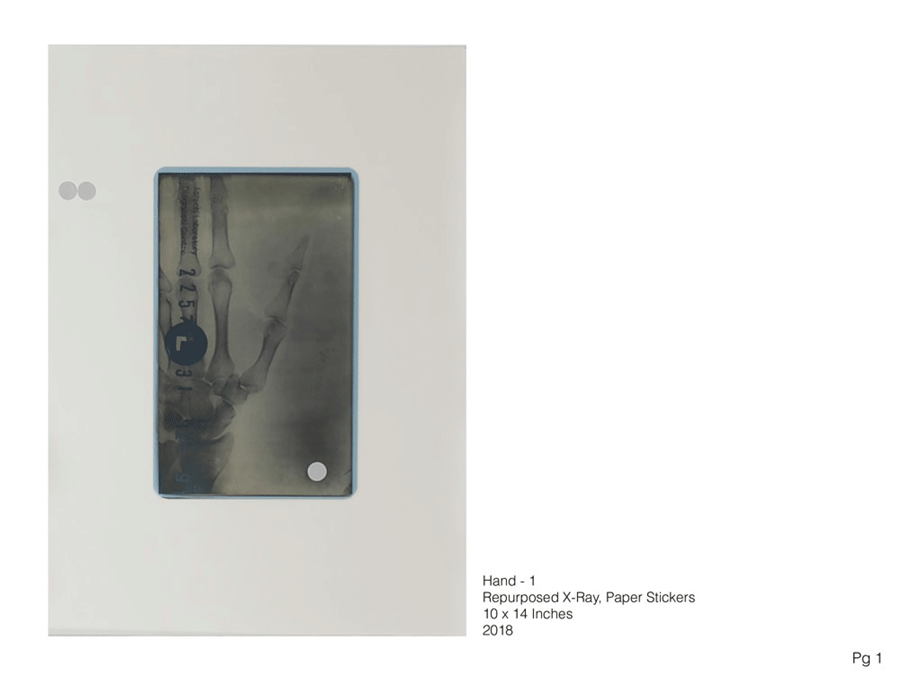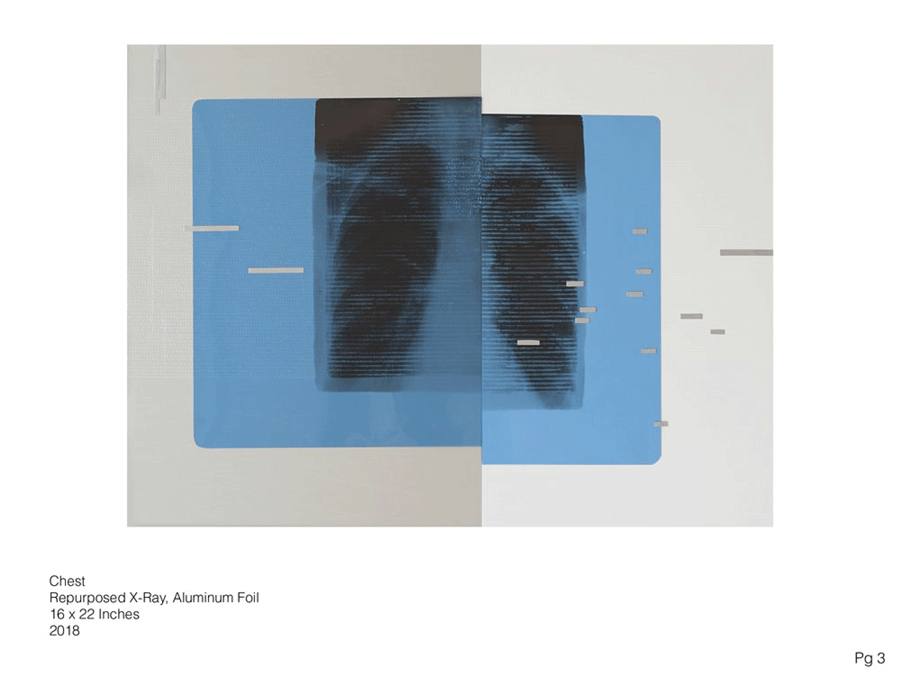Exploring Space and Form
By Nusrat Khawaja | Art Line | Published 6 years ago

Space and its properties remain an important preoccupation for Ayessha Quraishi. She has explored their ineffable qualities in the study of consciousness, in which space has served as an intermediary between “senses and states.” In her recent show at Canvas Gallery, all that is, is held, Ayessha has extended her meditative expressions of space by taking inspiration from the physical properties of matter.
Her entryway into the physical world came in the form of an X-ray of a friend’s hand (‘Hand-1’). Her deliberations on the X-ray became a wormhole into the complexity of body structures. Ayessha expanded her investigation by adding CT scans to her study. The outcome of her investigations has yielded an exhibition of unusual hybridity.
Light consists of different wavelengths that range from radio waves to gamma rays. The human eye can only see a portion of the spectrum that is known as visible light. The Impressionists were concerned with this accurately depicted band of light in their paintings. Its dynamic and transitory properties characterised the energy of their canvases.
 By basing her investigations on sight readings that go beyond the visible spectrum and into the high frequency range of the electromagnetic spectrum, Ayessha has enhanced her understanding of space and matter with the help of science. She looks at the body, and she reinterprets its complexity into art. Her imaginative use of material (re-purposed X-rays, re-purposed CT scans, distressed wrapping paper, paper, ink, oil paint, aluminum foil, paper stickers) results in a spectrum of poetic visual extrapolations regarding the structure and biology of the human body.
By basing her investigations on sight readings that go beyond the visible spectrum and into the high frequency range of the electromagnetic spectrum, Ayessha has enhanced her understanding of space and matter with the help of science. She looks at the body, and she reinterprets its complexity into art. Her imaginative use of material (re-purposed X-rays, re-purposed CT scans, distressed wrapping paper, paper, ink, oil paint, aluminum foil, paper stickers) results in a spectrum of poetic visual extrapolations regarding the structure and biology of the human body.
The ubiquity of X-ray imagery renders certain constructs made by Ayessha immediately recognisable, such as the images showing the skeletal hand (‘Hand – 1’ and ‘Hand – 2’) and the lungs (‘Chest’). In ‘Foot,’ she layers the X-ray strips with aluminum foil which has been crumpled and then flattened. The lines created by the crumpling are visible and add to the complexity of the work.
The use of line work is common to all the pieces in the show. It diverges from organic-looking crush lines to more geometric and angular lines as in the ‘Notes’ and the ‘Bodies in Motion’ series. This line work echoes Ayessha’s work in other shows where mark- and line-making indicated an intuitive approach to awareness. In all that is, is held, her intuition has found its complement in the hard physical evidence provided by medical machinery.
Visual art, even when based on scientific mechanism, is an act of reinterpretation. The imaginative faculty segues from hard evidence into unique expressions. In ‘Cell,’ the biological entity of the cell has been reinterpreted into a beautifully simple bipartite form that resembles the stoma of a leaf. In her work named ‘Black Square,’ Ayessha has repurposed an x-ray and album paper into a work that echoes the abstract minimalism of geometrical forms associated by Suprematism. Kazimir Malevich, a major proponent of the movement, wrote of getting rid of “the ballast of objectivity,’’ of evolving from representative form into pure abstraction.

In Ayessha’s work, the move from ‘’the ballast of objectivity’’ to imaginative art is nuanced. She does not wish to let go of the objective basis from which she derives her interpretations. Rather, she wants to create a dynamic link between them. ‘Black Square’ straddling calligraphy and geometry as it does, is an enigmatic image. The enigma is made more comprehensible by placing the work in the context of the artist’s exploration of space. She says: “For me, intuitively speaking, there is nothing that is empty; space without matter is not empty. Subtle encompasses dense, less is more. Being and not-being float in a pool of aliveness. All that is, is held.”
Clearly, Ayessha has recognised the paradox of space and matter where neither can exist without the other. The optical, electromagnetic and geometrical properties of space combine to create definitive form. Where the scientific apparatus serves to make structures visible, the metaphysical imagination explores the paradoxical nature of the invisible. Together, they open our minds to the manifold ways of making the universe more cogent.


